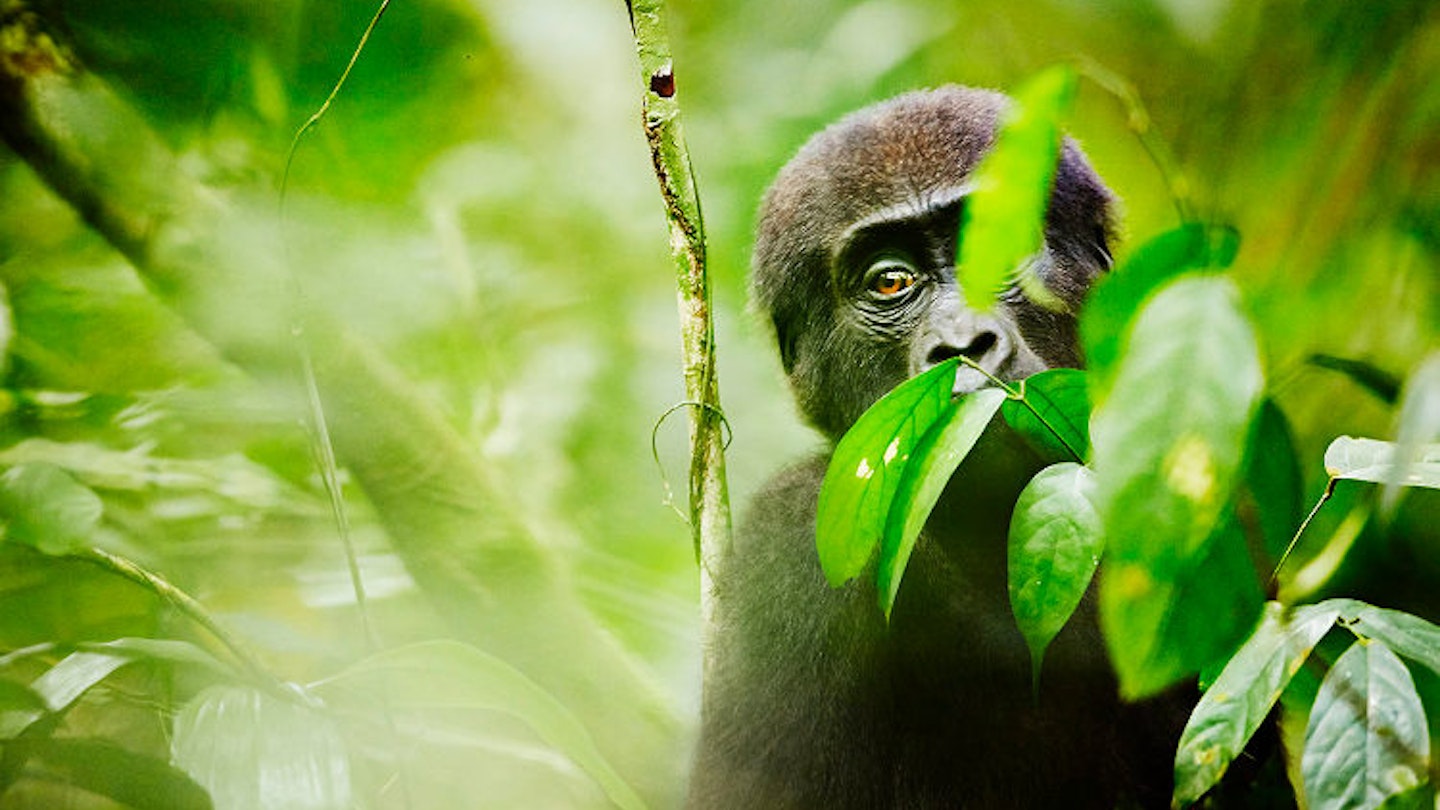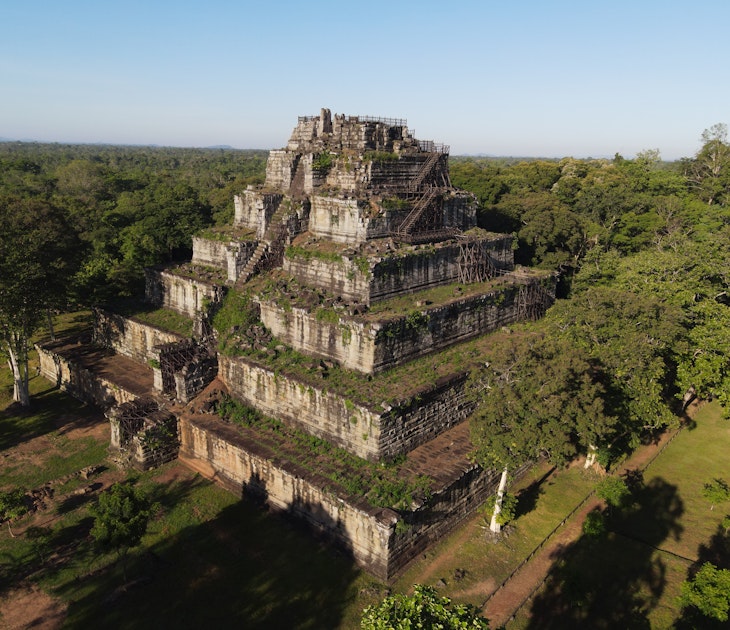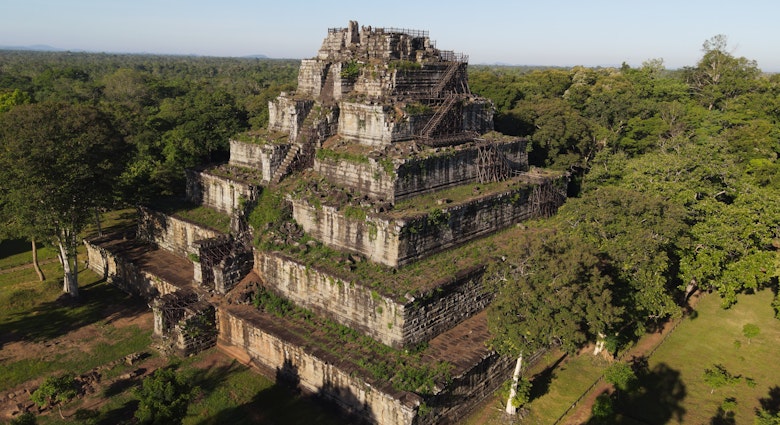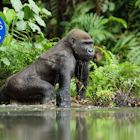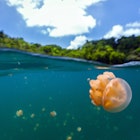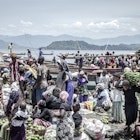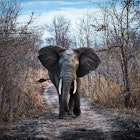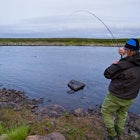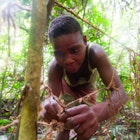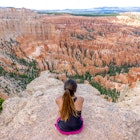A vast, uncharted wilderness, Africa’s ‘Heart of Darkness’ once drew Victorian explorers in search of seemingly mythical creatures. Follow in their footsteps with a gorilla-tracking safari in the Congo Basin’s rainforests. Here is one man's story, originally from Lonely Planet Traveller magazine.
Rain lashes the canopy, gathering in fat droplets that slither down through the murky stillness to the forest floor below. Here, a band of men is clambering over buttresses, ducking beneath vines twisted into braids as rigid as stone. At their head is an impish figure, his exuberant moustache and hat sagging in the sultry air. He takes a swig of brandy. He’s spent months in this boundless rainforest, sustained by little more than honey, the odd scrap of monkey meat, and longing. The object of his obsession? A creature known to local tribes as ‘njena’, a myth-like beast never before seen by Western eyes, a ghost of the Dark Continent.

The man stops, stoops and examines a root fragment. It has been torn from the ground and gnawed. Ahead, a small tree shakes in the windless forest and the crack of a branch ricochets through the understorey. Signalling to the others, he swings his rifle from his back and sets off into a tunnel torn through the foliage. Wrenching aside a curtain of leaves, he stumbles from the treeline and there, before him, stands his life’s goal – the ‘king of the African forest’. ‘It’s a sight I shall never forget,’ the man will later write. ‘It rose on its hind legs, a hellish expression of face like some nightmare vision, eyes flashing with fire. It gave vent to roar after roar like the roll of distant thunder, beat its breast in rage – and then advanced...’
Set on the fringes of Parc National D'Odzala in northern Republic of Congo, Oleme is some 200 miles east of where Victorian explorer – and sensationalist – Paul Du Chaillu ‘discovered’ gorillas. A half-day’s journey southeast of here lies Ngaga Camp. The drive showcases the binary world of this part of the Congo Basin – a mosaic of savannah and forest strung together by uneven dirt tracks. The Land Cruiser jerks wildly, to driver Maxwell Muswere’s delight. ‘We joke that, here, the drunk drivers are the ones going in a straight line,’ he says, his dreadlocks flailing, his laugh drowning out the straining engine. In the haze of the afternoon, the air above the savannah grasses glows a dusty pink. Enormous termite mounds dot the plains, their drooping, ghoulish contours bringing to mind churches melting in extreme heat. The Land Cruiser disturbs a squadron of blue swallowtail butterflies which take flight, briefly blotting out the sun. Beyond, a group of mud-coated forest buffalo look up from their water hole, ears twitching. They startle and break into a run, their horns swept back as if caught in the wind.
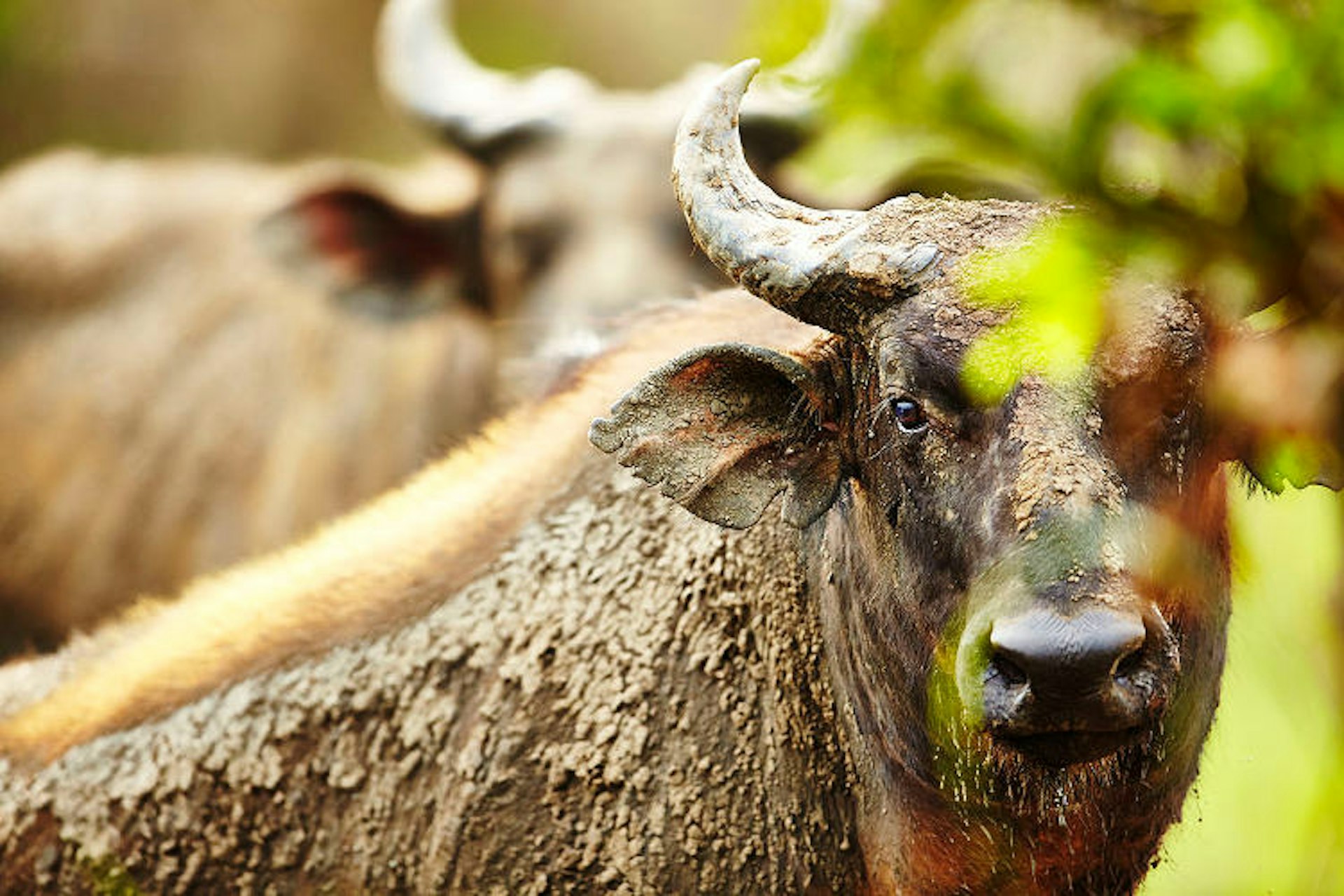
Crossing the forest threshold is like driving into an air-conditioned arena – cooler, fresher, voices amplified and echoing. The jarring screech of a chimpanzee rips through the upper storeys as a family of colobus monkeys gallops across the treetops, their white mantles flowing in their wake. A trio of women dressed in vibrant liputa fabrics wave from the roadside. They hold curved panga knives, and on their backs are baskets from which the woody rind of cassava roots protrude like gnarled fingers. An occasional anti-poaching guard passes, rifle clasped beneath khaki poncho, but otherwise human life is scarce. The Republic of Congo has one of Africa’s lowest population densities, the rainforest confining much of the 4.6 million population to the southern fringes around the capital Brazzaville.
It’s nearing dusk as the Land Cruiser pulls into Ngaga. The air is suffused with ginger and the cicadas are as loud as car alarms.
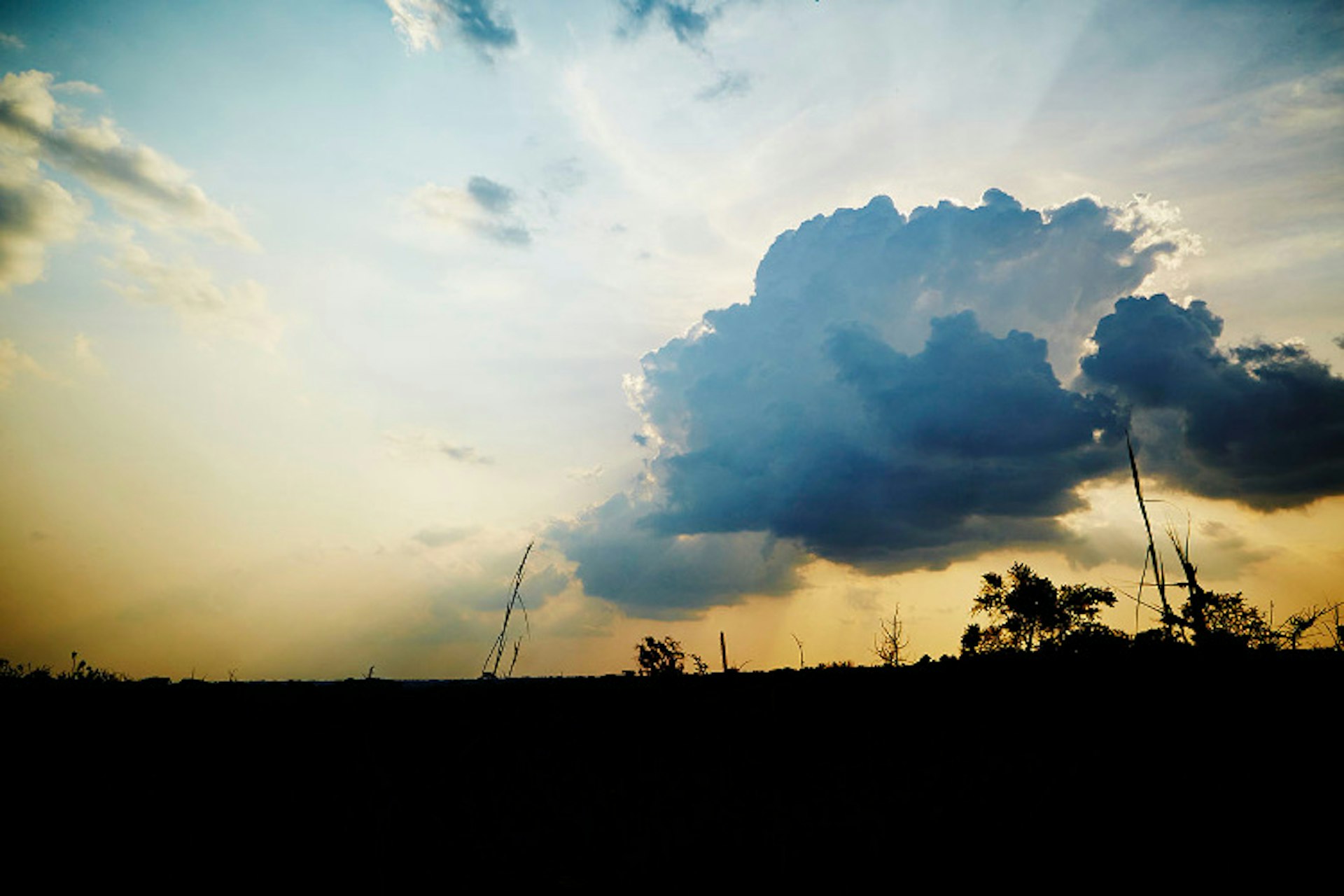
Dawn breaks in a riot of birdsong and, beneath its blanket of mist, the forest begins to stir. Shrieks and throaty roars reverberate through the trees, causing anticipation among the group gathered around the fire making final preparations. It’s a sense of what Du Chaillu must have felt upon venturing in to the unknown for the first time. Infinite possibilities, unimagined dangers. Laces are tightened, water supplies checked. Two guides, Karl and Zepherin, have been tasked with accompanying the group. The latter was formerly a hunter, and is renowned as a ‘master tracker’, capable of following the trail of a single gorilla.
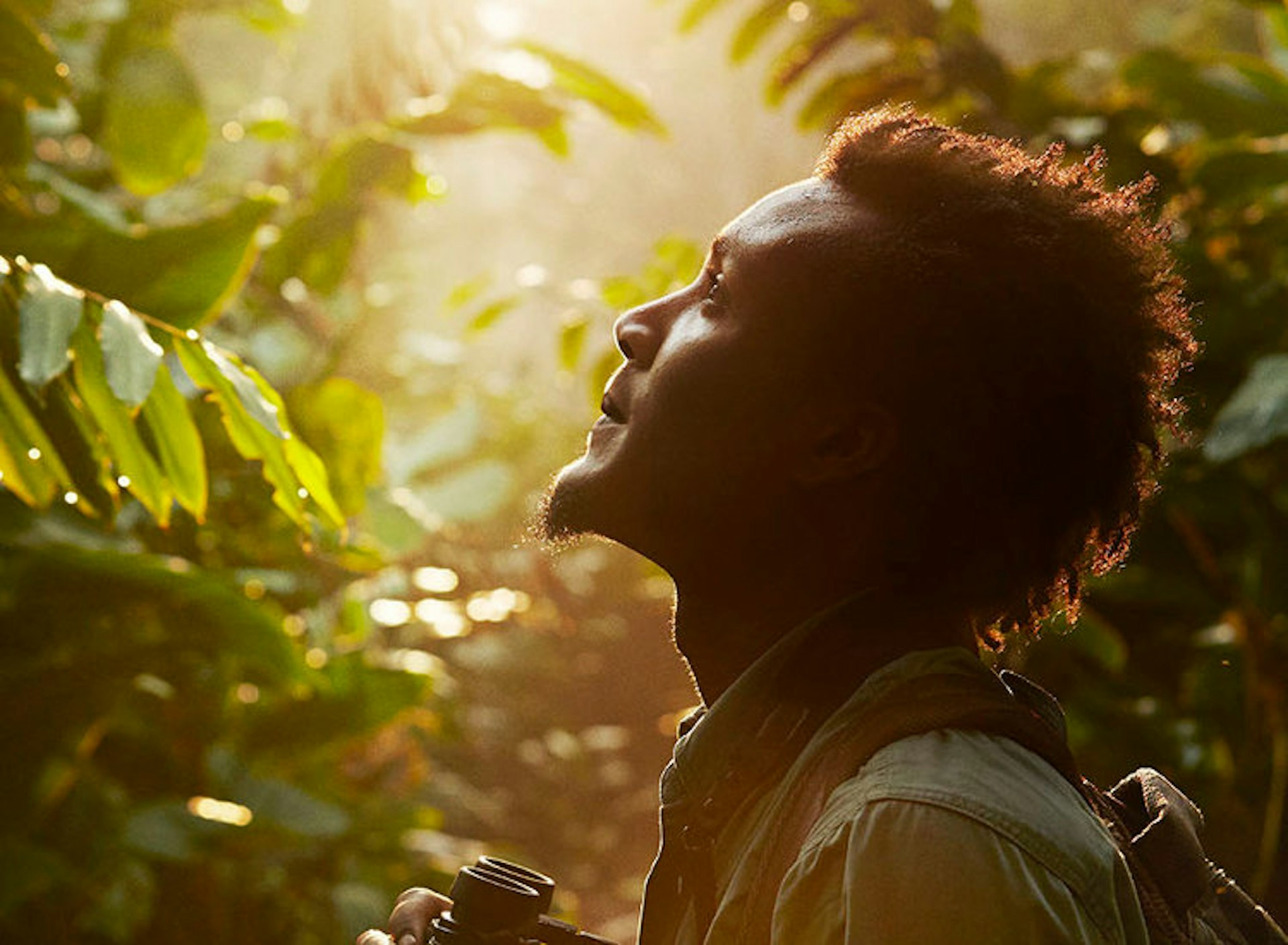
It quickly becomes apparent how exceptional a skill that is. The understorey is so dense in places it’s difficult to move. Twenty seconds of hacking to move forward a step or two. It’s a twilight world from which every plant seems locked in a race to escape. Branches, shoots and vines claw at one another, wrapping themselves in knots, straining ever skywards. As daylight slowly permeates the canopy, a lambent light envelops the forest, causing the moist leaves to glisten. All that interrupts the stillness is the soft whistle of an unseen yellow-throated cuckoo.
Around three hours in, Zepherin stops. Unspeaking, he nods ahead. Foliage is tentatively pulled aside and there they are, a group of 10 or more gorillas, just yards away. A duo of females, young clasping their fronts, tug at the brush while, above, a young male ascends the trees with ease. Other infants play on a vine, one lying back, hands behind head, the other rocking the makeshift hammock. Like satellites, all the action revolves around the silverback. The lone adult male is dug in to a spot between two large trees and is pulling up roots. He’s close enough that his chomping is clearly audible. The bulk is awe-inspiring, his armour-plated musculature belying a strict vegetarian diet.
A twig snaps underfoot and the silverback glances up. It’s a commanding look, certainly, but measured and intelligent rather than demonic. There’s an interminable pause and then, abruptly, he resumes eating. ‘Confrontation is the last thing he wants,’ Karl whispers. ‘Silverbacks would much rather use shows of aggression to deter potential aggressors.’ Later the young man will talk of witnessing one of these mock charges in which the gorilla had stopped just inches from an incautious fellow guide, gently forcing him into a subservient position. ‘I think that tells you so much about these creatures,’ says Karl.
To see the gorillas close up in the wild illustrates the injustice of Du Chaillu’s accounts. He’d confirmed the existence of these beasts, but also saddled them with an ill-deserved notoriety that was to endure. He’d replaced one myth with another. But if the explorer had a ‘habit of romance’, as one detractor claimed, perhaps he was not entirely to blame. With its unfathomable scale and unknowable secrets, the Congo has always fired imaginations. Where Du Chaillu left off, writers like Edgar Wallace, Edgar Rice Burroughs and Joseph Conrad would follow, feeding on and fuelling a fascination that remains to this day.
The silverback chews a final fistful of roots, gives off an unseen signal and, one by one, the group of gorillas evaporates into the mist.
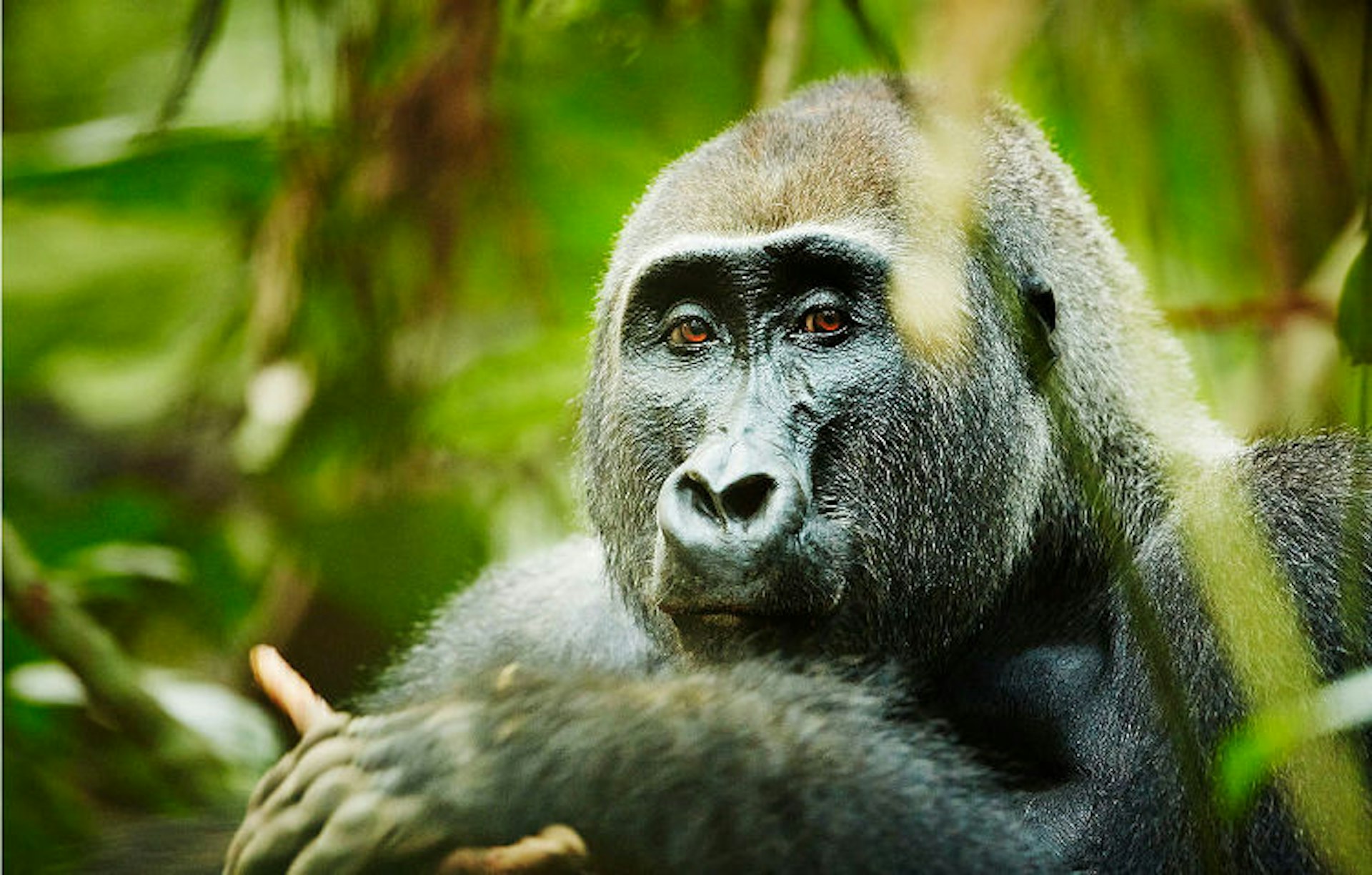
This is an abbreviated excerpt from 'Spirits in the Forest', a feature article from the December 2014 issue of Lonely Planet Traveller. Duncan Craig is a former contributing editor of the magazine. He enjoyed the Congo immensely, though he found swinging on vines harder than Tarzan made it look.
